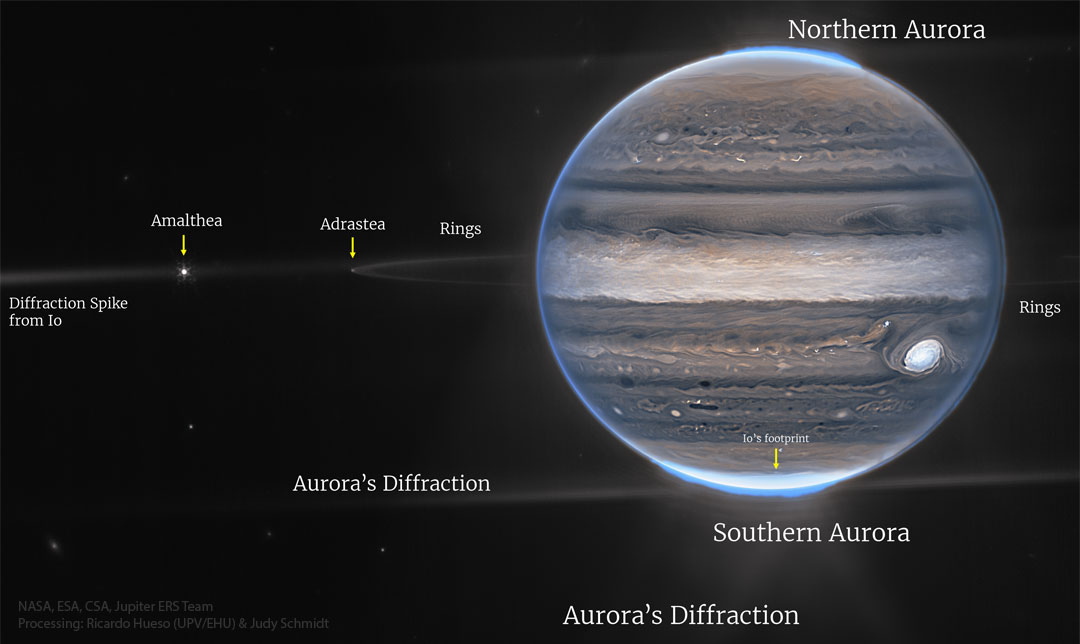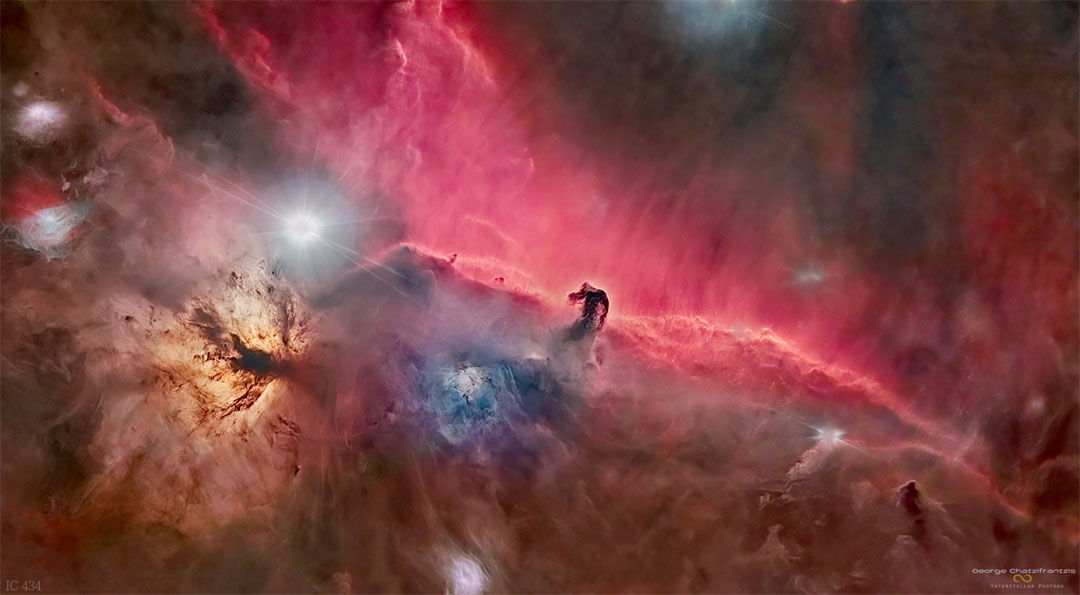안녕하세요, 잡학다식 입니다. 오늘은 과연 나사에서 어떤 방식으로 우주의 형상을 표현해 줄까요?
우선 이미지부터 볼 수 있도록 하겠습니다

해당 사진의 이름은 Jupiter from the Webb Space Telescope 인데요 우선 NASA에서 공식적으로 발표한 설명들을 확인해 보겠습니다
This new view of Jupiter is illuminating. High-resolution infrared images of Jupiter from the new James Webb Space Telescope (Webb) reveal, for example, previously unknown differences between high-floating bright clouds -- including the Great Red Spot -- and low-lying dark clouds. Also clearly visible in the featured Webb image are Jupiter's dust ring, bright auroras at the poles, and Jupiter's moons Amalthea and Adrastea. Large volcanic moon Io's magnetic funneling of charged particles onto Jupiter is also visible in the southern aurora. Some objects are so bright that light noticeably diffracts around Webb's optics creating streaks. Webb, which orbits the Sun near the Earth, has a mirror over six meters across making it the largest astronomical telescope ever launched -- with over six times more light-collecting area than Hubble.
이번에도 광활한 우주 앞에 인간이 얼마나 작은 존재인지 다시 한번 알게 되는것 같습니다
저는 내일도 더 좋은 사진과 함께 돌아오겠습니다, 그럼 행목한 하루 되시길 바랍니다
'과학상식' 카테고리의 다른 글
| NASA 나사의 오늘의 이미지들 (2022-09-01) (0) | 2022.09.02 |
|---|---|
| NASA 나사의 오늘의 이미지들 (2022-08-31) (0) | 2022.09.01 |
| NASA 나사의 오늘의 이미지들 (2022-08-29) (0) | 2022.08.30 |
| NASA 나사의 오늘의 이미지들 (2022-08-28) (0) | 2022.08.29 |
| NASA 나사의 오늘의 이미지들 (2022-08-27) (0) | 2022.08.28 |
